



FLOSS Manuals was launched by Adam Hyde in 2007 to remedy the deficit of good free documentation about Free Software. Our strategy since the beginning has been to develop communities to produce high quality free manuals about Free Software in their own language. Today, through the use of Booksprints and federated publishing techniques we have more than 120 books in more than 30 languages and more than 4,000 contributors.
FLOSS Manuals is more than a collection of manuals about doing things with free and open source software, it is also the community, The contributors include designers, readers, writers, illustrators, free software fans, editors, artists, software developers, activists, and many others. Anyone can contribute to a manual – to fix a spelling mistake, add a more detailed explanation, write a new chapter, or start a whole new manual on a topic.
FLOSS Manuals now consists of 3 independent language communities (French, English, Finnish) supported by a Foundation based in Holland. Our current focus is to develop strong partnerships with grassroots educators to develop educational materials about free software. Come to our UK hub warm-up meeting at Furtherfield to propose books/manuals projects, to encourage others to propose book/manual projects and also to invite publishers, or people interested in publishing.
The afternoon is convened by Larisa Blazic, Mick Fuzz and Rachel Baker. Mick is a long-term contributor at FLOSS Manuals and community educator. Rachel has recently undertaken a detailed study of Booksprints process. Larisa is investigating how FLOSS tools and practices to be best embedded in post-graduate programmes.
Lara: lab_web AT yahoo.com
Mick – FM: mick AT flossmanuals.net
Creativeworks London PhD in Residence at Furtherfield
Download a pdf of the research here
Furtherfield believe that through creative and critical engagement with practices in art and technology people are inspired and enabled to become active co-creators of their cultures and societies.
VisitorsStudio, first developed in 2003 with artist programmer Neil Jenkins, is multi-media co-creation software which aims to work towards Furtherfield’s wider goals by providing a site for real-time collaborative creation, dialogue, polemic and networked performance and play.
A new 3 month residency project at Furtherfield in partnership with Creativeworks London has invited Alex Reynolds, an AHRC funded PhD student from Kingston University, to help conceptually redesign VisitorsStudio according to contemporary developments in software and changes in social interaction and exchange associated with ubiquitous mobile technologies; and to inform the rebuild of the site as a Free and Open Source project.
The project, entitled ‘Reviewing and Open-Sourcing VisitorsStudio’ will principally involve analysing other projects similar to VisitorsStudio and consulting with its users to help identify new features for design and interaction which could help productively rethink the online creation space. The project will also mean considering ways VisitorsStudio can most effectively provoke artistic engagement with contemporary social and cultural questions.
Through her research, Alex will be working to rethink the design and functionality of VisitorsStudio and will be producing ideas for a possible new site model by the end of the project in mid-June 2013.
Your opinions are important to this project! If you would like to offer your ideas about how we can best redesign VisitorsStudio for 2013 please feel free to get in touch by emailing Alex at alexandra.reynolds@kingston.ac.uk.
http://www.visitorsstudio.org
http://www.creativeworkslondon.org.uk/cw-news/phd-in-residence-round-one-awards/
http://fada.kingston.ac.uk/research/degrees/research_students.php
The Philosophy Of Software
Code and Mediation in the Digital Age
David M Berry
Palgrave Macmillan, 2011
ISBN 9780230244184
http://lab.softwarestudies.com/2011/04/new-book-philosophy-of-software-code.html
“The Philosophy Of Software” is an ambitious book by David Berry, who has turned his attention from the social relations and ideology of software (in “Rip, Mix, Burn”, 2008) to the question of what software means in itself. The philosophy that he has in mind isn’t the mindless political libertarianism attributed to hackers or the twentieth-century foundational mathematics that is the basis for the structure of many programming languages. It is a serious and literate philosophical reading of software and its production.
Software is an important feature of contemporary society that is rarely considered as a phenomena in its own right by philosophers. Software permeates contemporary society, Berry gives the examples of Google’s profits and the “financialisation” of the economy through software as examples of software’s importance in this respect. In reading this review on a screen you have used maybe a dozen computers, each containing multiple programs and libraries of software directly involved in serving up this page. Digital art and cyberculture often use and discuss software and philosophy (or at least Theory), but usually to illustrate a point about something other than software. The software itself is rarely the subject.
Rather than devote each chapter to a different philosopher’s views on software or adopting a pre-existing description of software Berry develops a novel and insightful philosophical approach to understanding and considering software. After providing an introduction to the foundational ideas and culture of software (Turing, Manovich, Cyberpunk), Berry presents a way of thinking through different aspect of software. The source code, the comments, the compiled program. Each stage and product of the lifecycle of software is given a philosophical context.
Heidegger emerges as the philosopher whose ideas first underwrite Berry’s approach to software. Latour and, in a surprising way, Lyotard play pivotal roles in later chapters. If these are not philosophers you were well inclined towards before then you are in for a pleasant surprise.
Berry presents some typographically appealing and culturally interesting code in order to demonstrate different features of the production of software. The swearing placed in Microsoft’s Windows source code comments by its programmers will mirror the frustration of many of its users. The Diebold voting machine code that illustrates the assumed social and gender roles of its human subjects show that code is very much a product of the social biases of its human authors.
Much of the code illustrated in the book is code poetry or obfuscated code. These are double-coded programs, where source code that can be run by a computer is written and formatted to be not just understandable but evocative and meaningful to human readers as something read rather than run. As with the comments in the Windows and Diebold code, a criticism that might be levelled at such code is that such textual decoration does not affect the compiled (or executed) form of the code.
But comments and formatting are what Berry refers to as commentary code and delegated code in his grammar of code. It has been said that code is written primarily for human beings to read and only secondarily for computers to execute, and obfuscated or poetic code is regarded as high art by many programmers. It must exemplify some of code’s salient features to them, and so it can be used to do so to a more general audience. And the cultural assumptions of code can survive from its source code into its execution and interface: witness the relief of many of Diaspora’s users than “Gender” was a free-form text field rather than a simple binary choice of “Male” or “Female”.
The final chapter on network streams provides a strong critical philosophy of social networking and other software that reduces human experience to a stream of software representations of events. After discussing what it means for a human being to be a “good stream”, Husserl’s idea of “comets” as a precedent for lifestreams and Lyotard’s idea of the stream (both of which predate the streams of the Internet by many years), Berry presents the idea of Dark Streams as a way of resisting the demands of Web 2.0. I would single this out as the most timely and invigoration section of the book and a must-read for anyone involved in producing, consuming, or critiquing networked software culture.
What doesn’t the book cover? There is no visual coding or livecoding. Berry explicitly avoids “screen essentialism”, where the output of code is concentrated on to the exclusion of its production and execution, but despite following programs from their writing through compilation to first assembly code then machine language, running software and algorithms (at the micro level) are not considered, nor (at the macro level) are the architectures of applications or of operating systems. Nor is testing except in passing. But this fits with the emphasis of the book on code as text, and the framework that it provides can be extended to these topics. Hopefully by Berry.
“The Philosophy Of Software” is particularly inspiring as a spur to further research. Each page is brimming with references in the style of the academic papers that many of the chapters were first produced as and whilst this style can be distracting at first (compared with popular science books for example) it is ultimately rewarding and gives the reader any number of fascinating leads to follow up.
What is important about “The Philosophy Of Software” is that it really is about what it claims to be about. Rather than trying to shoehorn software into an existing philosophical or political agenda it considers software as a thing in itself and finds those philosophers and philosophical ideas that best address the vitally important phenomenon of software. However much philosophy, computer science or cybercultural theory you may know this is a book that will set you thinking about software anew.
The text of this review is licenced under the Creative Commons BY-SA 3.0 Licence.
Between July 27th and August 29th, 2010, the eleventh edition of the FILE festival is taking place in Sao Paulo (Brazil), at several locations along the popular Paulista Avenue. After a decade of existence, this veteran festival, which spreads over several cities in Brazil (including Rio de Janeiro and Porto Alegre) as well as other international locations, has introduced for the first time its own award: the FILE PRIX LUX. With a total amount of approximately 120,000 euros, distributed in three categories, the prize is unprecedented in the continent and has received, on this first edition, 1,235 registrations from 44 countries.
Yet this award is not the only remarkable aspect of this year’s festival, which stands out for being particularly accessible to the general public. On the one hand, the exhibitions, performances and workshops as well as the symposium have no entrance fees, and therefore there have been many visitors, most of all young people who line up every day to experience the interactive installations at the FIESP-Ruth Cardoso Cultural Centre. On the other hand, the festival organizers, Ricardo Barreto and Paula Perissinotto, have developed this year a project that takes digital art to the Paulista Avenue by placing several interactive artworks at different locations in the public space. Finally, even the FILE PRIX LUX has been open to the interaction with the public by introducing a popular vote category and an online voting system which was accessible between May and June. This openness sets a good example of how media art festivals can engage the general public to approach this somewhat ignored form of art.
In general terms, the award categories at media art festivals have been subject to change as the creative uses of technology evolved during the last decades. The FILE PRIX LUX has the advantage of being created at a time in which it can be relatively safe to set up a few broad categories that cover most of the forms of combining art and technology. Only three categories have been established: Interactive Art (which usually refers to objects and installations that respond to inputs from the viewer/s), Digital Language (related to the festival’s title and which embraces any artwork that deals with language, narrative, code or text in a generative or interactive manner) and Electronic Sonority (the category assigned to any artwork in which the production or manipulation of sound is a key element). These three categories prove to be comprehensive, as shown by the diversity of the projects distinguished with a prize or an honorary mention: immersive interactive installations, musical performances, urban interventions, bioart pieces, a collectively created machinima movie and even an iPhone app are among this year’s FILE PRIX LUX awardees.
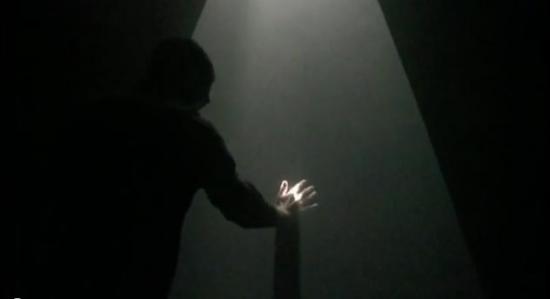
In the Interactive Art category, the winners are Ernesto Klar for Relational Lights (1st prize) and Kurt Henschläger for Zee (2nd prize). Both present immersive environments in which light and space are key elements, although the interaction is totally different. Klar’s work invites the viewer to interact with two projected geometric drawings inspired by the work of Lygia Clark. In a hazy dark room, the viewer sees two T-shaped projections of white light on the ground, which form a three-dimensional space which reacts to the visitor’s presence. The interaction is playful and really beautiful in its simplicity, whilst also limited in time: after a few minutes, the projections suddenly stop reacting to the user’s movements and reconfigure themselves in a new shape. This abrupt interruption is consciously introduced by the artist in order to remind the viewer that the artwork has a life of its own. In contrast, Henschläger’s Zee takes place mostly in the mind of an audience exposed to an overdose of audiovisual stimuli in a foggy room. Continuing the experience of his acclaimed performance FEED, this time the artist allows the viewer to walk around the space and have a more meditative sensory experience.
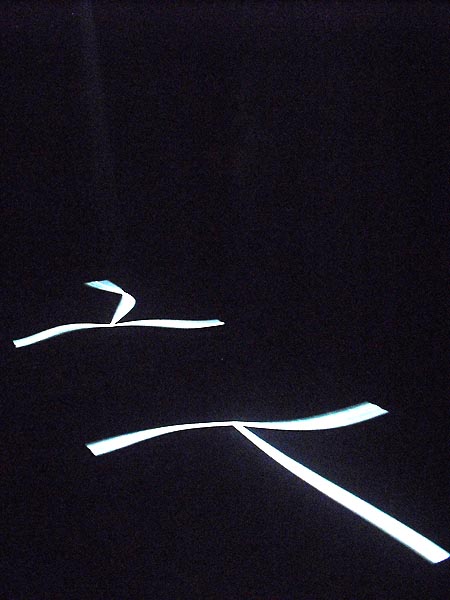
The Electronic Sonority category has brought together several outstanding works, among which Jaime E. Oliver’s Silent Percussion Project and TERMINALBEACH’s Heartchamber Orchestra have been distinguished with the 1st and 2nd prize, respectively. In both projects the human body is incorporated in a novel form in the creation of music, the sound being produced, moreover, not simply by direct inputs but by complex interactions in a constant flow of data. Oliver’s instruments convert the shapes created by the performer’s hands into streams of data that generate, in turn, different sounds. These sounds are not always the same, as could be the case in a traditional instrument, but are changed by the variables established in previous interactions. Thus, Oliver does not simply create a new form of interacting with an instrument but rather a new form of creating music. In a similar way, the [i]Heartchamber Orchestra[/i] project developed by TERMINALBEACH (Erich Berger and Peter Votava) explores a form of creating music based on a feedback loop in which the performers are writing and following the score at the same time. As the artists state, in their project “the music literally comes from the heart”: a network of 12 independent sensors record the heartbeats of the musicians in an orchestra and sends the data to a software that generates a musical score in real time. The musicians play the score as it is displayed on the laptops in front of them, while their heartbeats set the notes in a continuous cycle in which music and performer constantly influence each other.
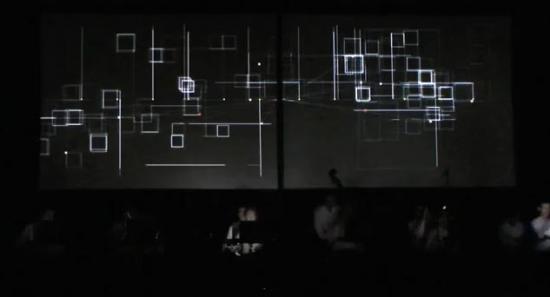
Digital Language is certainly the broadest category of this FILE PRIX LUX, its awardees being quite dissimilar in the formats they use and the objectives of their respective projects. The organizers define this category as including “all research and experiments in the ambit of the multiple disciplines that use digital media”, and the winners exemplify how diverse these disciplines can be. The 1st prize winner, Tardigotchi by the artists collective SWAMP (Douglas Easterly, Matt Kenyon and Tiago Rorke) is a bioart project that sets a critical comparison between artificial and real life. A nicely designed, steam punk-inspired device hosts, on the one hand, a tardigrade, a microorganism measuring half a millimeter in length, along with a robot arm that injects a substance that feeds the creature and a heating lamp that provides warmth. On the other hand, a digital display shows the virtual avatar of this tardigrade, with which the user can interact. Humorously referencing the popular Tamagotchi toy, the artists create a link between the avatar and the real creature: when the user presses the button to feed the avatar, the device inserts real food in the environment of the tardigrade; when an email is sent to the digital creature, a heating lamp gives warmth to the microorganism. Thus, interacting with the virtual pet has consequences in a real living being. This brings our attention into what we can consider alive and how we emotionally attach to artificial creatures while at the same time we undervalue the existence of other living beings. On a different approach, the 2nd prize winner, Hi! A Real Human Interface, by the collective Multitouch Barcelona (Dani Armengol, Roger Pujol, Xavier Vilar and Pol Pla), proposes a more human relationship with technology. A video presents the concept developed by this interaction design group of a different GUI in which a real person is displayed as impersonating the computer. Common interface elements are replaced by handmade physical objects which remind the aesthetics of a video by Michel Gondry. The result is a playful form of interaction in which simple operations such as checking email or upgrading the operating system are shown as actions carried on with real objects by a person inside a box. The proposal is engaging and certainly sets a departure from the old desktop concept, yet it remains unsure to what extend this type of interaction can be applied in a real operating system.
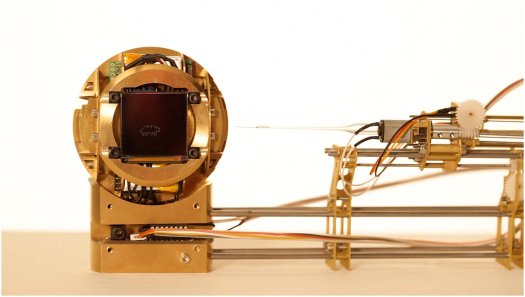
The works that obtained a Vesper statuette (symbol of the FILE PRIX LUX award) along with the also outstanding Honorary Mentions are exhibited at the FIESP-Ruth Cardoso Cultural Centre in a group show that also includes FILE Media Art, a selection of more than 70 works that can be accessed on several computers, as well as a selection of videogames and machinima films. The exhibition is thus richer in content than it would seem at first sight, as the space is divided in numerous sections that conceal several installations which demand (as usual) almost total obscurity. The artworks are well presented, although at times the sound from one installation invades the others, and there are no wall labels that inform the viewer about the concept of the piece or the way to interact with it. The latter, much-discussed issue is quite important, since the info-trainers cannot explain the artworks to every visitor, and quite often this entails that some people may not interact with the pieces or worse, start smashing buttons or interfering projections blindly in the hope of modifying them. Despite this fact, the exhibition has proven to be very successful during the first week of the festival, with a steady flow of visitors who showed a profound interest in the artworks.

A part of the exhibition is devoted to the FILE MACHINIMA section, curated by Fernanda Alburquerque, who selected over 40 works. Among these is the award winner in the Popular Vote category, War of Internet Addiction, by Corndog and the Oil Tiger Machinima Team from China, a 64-minute movie collectively created by players in the MMORPG War of Warcraft. More than mere entertainment, this film has been created as a form of protest against the Chinese authorities’ attempt to control the access and commercial benefits derived from the WoW game, which is extremely popular in the country. The film has had 10 million views since January 2010 and despite being available only in Chinese, it has been the favorite work of those who participated in the online voting system of the FILE PRIX LUX. Besides this feature film, other short films explore the possibilities of building narratives in virtual environments such as Second Life and videogames such as Half Life 2, Eve Online or Shadow of the Colossus.
In addition to the main exhibition, the FIESP Cultural Centre hosts a series of performances and screenings. Under the title Hypersonica, the festival presented a series of digital music performances, among which where the two winners of the FILE PRIX LUX in the Electronic Sonority category. FILE DOCUMENTA, curated by Eric Marke, offers in its 5th edition a selection of “rare and new” documentary films, among which Andreas Johnsen’s Good Copy Bad Copy, an interesting exploration of the conflicts between remix artists and copyright owners, or Robert Baca’s Welcome to Macintosh, which records the first years of the history of Apple Computers.
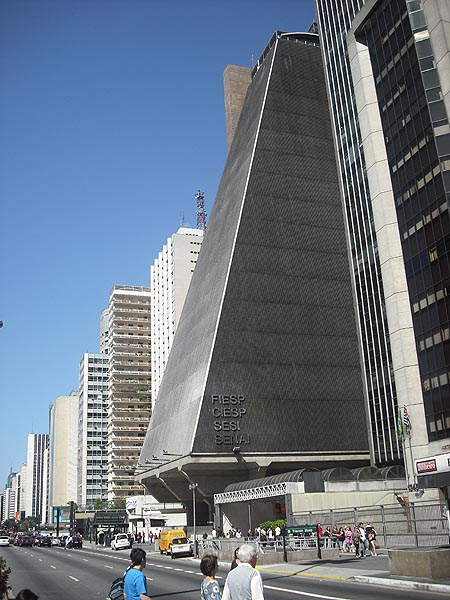
The symposium, hosted by the Instituto Cervantes in Sao Paulo, gathered several experts and artists who presented their explorations in the theory and practice of media art. Among the most interesting contributions were the presentation of Prof. Espen Aarseth on the aesthetics of ludo-narrative software, and the colloquy of South American digital art, in which Raquel Renno (Brazil), Jorge Hernandez, Ricardo Vega (Chile) and Vicky Messi (Argentina) discussed the current developments in the media art scene in the South Cone.
Alongside the FILE PRIX LUX, the most outstanding feature of the present edition of the festival is FILE PAI (Paulista Avenida Interactiva), which takes several interactive artworks to the public spaces in the Paulista Avenue. Interactive art offers the possibility of bringing art to the public space in a more efficient and dynamic form than what is usually known as “public art”. As Ricardo Barreto states: “the public environment is not something empty, aseptic and dead, as is the old white cube; on the contrary, it is an environment teeming with life, with multiple interests and multiple behaviors”. Interactive art integrates itself into this environment and is much more apt to relate to a public that is now willing to take an active role. The organizers of the FILE festival have distributed twelve interactive artworks along the Paulista Avenue, at subway stations, inside shopping malls, and even in a bus. The selected artworks include, among others, videogames such as Patrick Smith’s Windosill or the celebrated games of That Game Company, Flower and Flow; VR/Urban’s SMSlingshot, an urban intervention project that allows users to write a message in a custom-made slingshot that incorporates a screen and a keyboard and then send the message to a wall, where it is displayed as a virtual graffiti; Karolina Sobecka’s Sniff, an interactive projection in which a virtual dog reacts to the presence of passersby; the installations of Rejane Cantoni and Leonardo Crescenti Piso and Infinito ao Cubo, which attracted a large number of people, and the sound piece Omnibusonia Paulista by Vanderlei Lucentini, which is played in a bus as it moves along the avenue, interacting with several points in the itinerary and thus generating a new set of sounds in every trip. These works reveal the possibilities of integrating interactive art in the public space, to the point that, as Ricardo Barreto indicates, “the new paradigm of public art will be the interactive city”. The busy Paulista Avenue is certainly a good location for the creation of an emerging, interactive city.
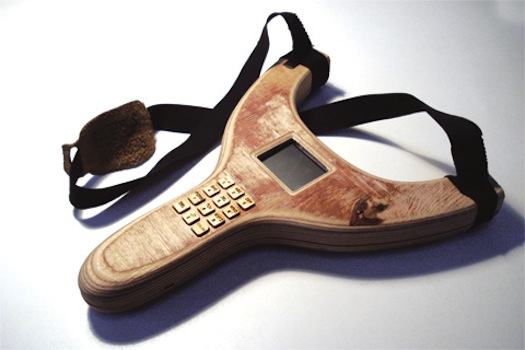
In this 11th edition, the FILE festival has achieved a state of maturity. The FILE PRIX LUX, FILE PAI and an estimated 25,000 visitors to date support its claim of being the largest festival of its kind in Latin America, and a steady event that places Brazil in the map of the international digital art scene. In a tightly interconnected world, each region is a node: there isn’t a center and a periphery anymore, there are no colonies. FILE exemplifies how a region can become a powerful node in this network by promoting the most recent developments in art and technology, avoiding obsolete distinctions between North and South and becoming a point of development for the future stages of our digital culture.
An Interview with Heath Bunting – Part 1
I first met Heath when I moved to Bristol (UK) in 1988. It felt important, even profound. Not in a ‘jump in a bed’ kind of way. Yet our meeting did seem life changing somehow, to the both us. We hit it off and we collided – as equals – our collisions resonated, it shook our imaginations. From then on our paths, our lives connected and clashed regardless. We regularly challenged each other through constant, critical duels of dialogue; about activism, art, technology and ideas surrounding different life approaches and philosophies. From 1988 – 1994 (just before the Internet had properly arrived), in Bristol and London we collaborated on various projects such as pirate radio, street art and the cybercafe BBS – Bulletin Board System. We then went our separate ways exploring our own concerns more deeply, but continued to meet every now and then. Us both meeting in Bristol changed both of our worlds, it built the grounding of where we are now.
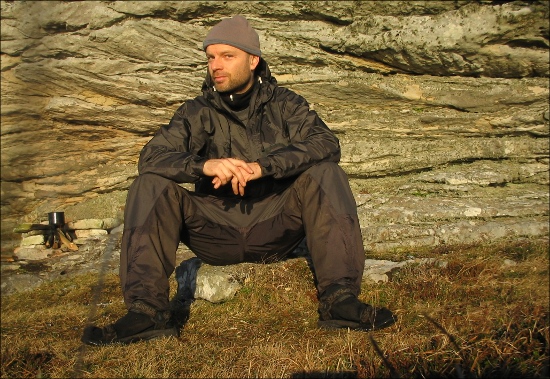
Heath founded the Irational.org collective in 1995, a loose grouping of six international net and media artists who came together around the server irational.org. The collective included Daniel Garcia Andujar / Technologies to the People (E), Rachel Baker (GB), Kayle Brandon (GB), Heath Bunting (GB), Minerva Cuevas / Mejor Vida Corporation (MEX) and Marcus Valentine (GB).
Heath Bunting’s work manifests a dry sense of humour, a minimal-raw aesthetic and a hyper-awareness of his own artistic persona and agency whilst engaging with complex political systems, institutions and contexts. Crediting himself as co-founder of both net.art and sport-art movements, he is banned for life from entering the USA for his anti GM work, such as the SuperWeed Kit 1.0 – “a lowtech DIY kit capable of producing a genetically mutant superweed, designed to attack corporate monoculture”. Bunting’s work regularly highlights issues around infringements on privacy or restriction of individual freedom, as well as issues around the mutation of identity; our values and corporate ownership of our cultural/national ‘ID’s’, our DNA and Bio-technologies “He blurs the boundaries between art, everyday life, with an approach that is reminiscent of Allan Kaprow but privileging an activist agenda.”[1]
In this two part interview we will discuss his current work within two distinctive areas of digital culture and sport-art starting with The Status Project, which studies the construction of our ‘official identities’ and creates what Bunting describes as “…an expert system for identity mutation”. His research explores how information supplied by the public in their interaction with organisations and institutions is logged. The project draws on his direct encounters with specific database collection processes and the information he was obliged to supply in his life as a public citizen, in order to access specific services; also on data collected from the Internet and from information found on governmental databases. This data is then used to map and illustrate how we behave, relate, choose things, travel and move around in social spaces. The project surveys individuals on a local, national and international level producing maps of influence and personal portraits for both comprehension and social mobility.
Marc Garrett: For many years now, your work has explored the concept of identity, investigating the various issues challenging us in a networked age. The combination of your hacktivist, artistic approach and conceptual processes have brought about a project which I consider is one of the most comprehensive, contemporary art projects of our age. The Status Project, deals with issues around personal identity head-on.
Why did you decide to embark on such a complex project?
Heath Bunting:
Three reasons
1. the network hacker
the network hacker fantasises about unlimited access to all systems made available through possession of treasure maps, keys and navigation skills
2. the Buddhist
the Buddhist intends to destroy the self and become only the summation of environmental factors plus find enlightenment in even the most banal bureaucracy
3. the computer scientist
the computer scientist aims to find comfort and hidden meaning in complex data
I am all three and am attempting to combine the obsessions of each into one project.
So far I have
Created a sketch database of the UK system with over 8000 entries
Created over 50 maps of sub-sections of the system to aid sense of place and potential for social mobility
Created system portraits of existing persons
Created software to generate new identities lawfully (off the shelf persons) and sold these identities
I am currently adding more data to the database. Which is split between the human being (flesh), the natural person (strawman) and the artificial person (corporation). Remaking maps using upgraded spider software, researching how to convert my identity generating software into a bot recognised under UK law as a person; and hence covered by the human rights act i.e. right to life and liberty; freedom of expression; peaceful enjoyment of property. I am very close to achieving this.
Did you know that 75% of the human rights act applies to corporations as well as individuals? If you were afraid of corporations in the 90’s and noughties then be very afraid of the automated voices that speak to you on stations or programs that transact currency exchanges, as they will soon be your legal equals as with all Hollywood propaganda, the reverse is true. The human beings will be the clumsy, half wit robot like creatures serving the new immortal ethereal citizens. If you think I am mad or joking, check back in 10 years time.
MG: Way back in 1995, there were already various groups and individuals (including yourself) who were critiquing human relationships whilst exploiting networked technology. Creative people who were not only hacking technology but also hacking into and around everyday life, expanding their skills by changing the materiality, the physical and immaterial through their practice. It was Critical Art Ensemble (CAE) who in 1995 said “Each one of us has files that rest at the state’s fingertips. Education files, medical files, employment files, financial files, communication files, travel files, and for some, criminal files. Each strand in the trajectory of each person’s life is recorded and maintained. The total collection of records on an individual is his or her data body – a state-and-corporate-controlled doppelganger. What is most unfortunate about this development is that the data body not only claims to have ontological privilege, but actually has it. What your data body says about you is more real than what you say about yourself. The data body is the body by which you are judged in society, and the body which dictates your status in the world. What we are witnessing at this point in time is the triumph of representation over being. The electronic file has conquered self-aware consciousness.”[2]
15 years later, we are dealing with an unstoppable flow of meta-networks, creeping into every area of our livng environments. We have mutated, become part of the larger data-sphere, it’s all around us. As you describe, it seems that we are mutating into fleshy ingredients, nourishing a technologically determined world.
HB: Data body is quite a good way to think about it. I consider each human being to possess one or more natural person(s) and each natural person to control or possess none, one or more artificial person(s) (i.e. corporation). The combined total of natural and artificial persons possessed or controlled by a human being can be thought of as their databody. As human beings, we have quite a lot of control over our persons (natural and artificial). The problem is that we either don’t realise this or it takes the time to manage them. It’s possible to obtain a corporation for less than the price of a train ticket between Bristol and London. Why do so many people live without one? Could anti corporate propaganda have something to do with this ?
“What is most unfortunate about this development is that the data body not only claims to have ontological privilege, but actually has it. What your data body says about you is more real than what you say about yourself.”(CAE).[2]
Only if you remain a passive user of it. The natural person is only linked to the human being through such fine devices as a signature, which we decide to give or withhold, most human being’s natural person is actually owned by the government and borrowed back by the human being. This does not have to be the case as we can create and use our own persons.
“The data body is the body by which you are judged in society, and the body which dictates your status in the world. What we are witnessing at this point in time is the triumph of representation over being. The electronic file has conquered self-aware consciousness.”(CAE).[2]
I would say laziness has triumphed over mindfulness. All information about the functioning of natural persons is easily available, all persons have the same rights unless they choose not to claim them. Instead, people choose to get lost in their own selves and dreams, indulged by those that seek to profit from their labour.
Technology is becoming more advanced and the administration of this technology is becoming more sophisticated and soon, every car in the street will be considered and treated as persons, with human rights. This is not a conspiracy to enslave human beings, it is a result of having to develop usable administration systems for complex relationships. Slaves were not liberated because their owners felt sorry for them, slaves were given more rights as a way to manage them more productively in a more technologically advanced society.
MG: Getting back to the part of your project which incorporates a complex process of compiling and creating ‘off the shelf persons’, as you put it. Are you using some of the collected data as a resource to form these new identities, or is it a set of ‘hybrid’ identities?
HB: Please expand this question further…
MG: Near the beginning of the interview, you mention that you “Created software to generate new identities lawfully (off the shelf persons) and sold these identities.” I am asking whether most of these ‘new identities’ that you have formed and sold are, a mixture of different bits of information. Like data-versions of body parts from a machine or vehicle, reused, recycled to recreate, make new hybrid identities?
HB: The identities I can create are all new and legal, they are a portfolio of new unique legal relationships created with existing artificial persons. For example, registering with Tesco Clubcard either creates or consolidates the new natural person http://status.irational.org/identity_for_sale – for a new natural person to be credible, it must be coherent and rational. This is achieved simply by following the rules of the system, the more interrelating links with other persons, the more real the new person becomes.
Off the shelf natural person.
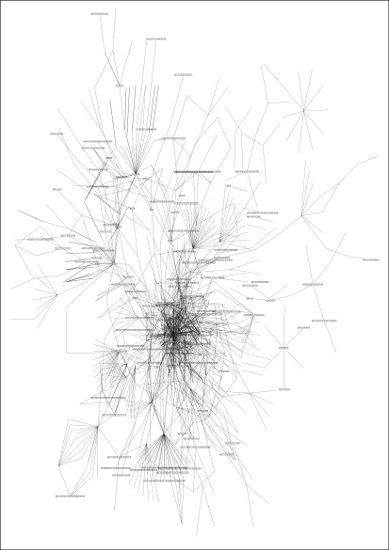
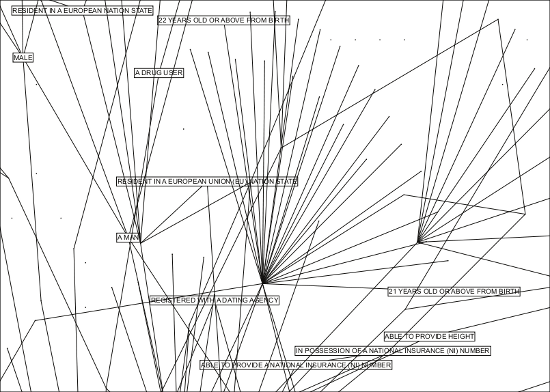
Comes with supporting physical items:
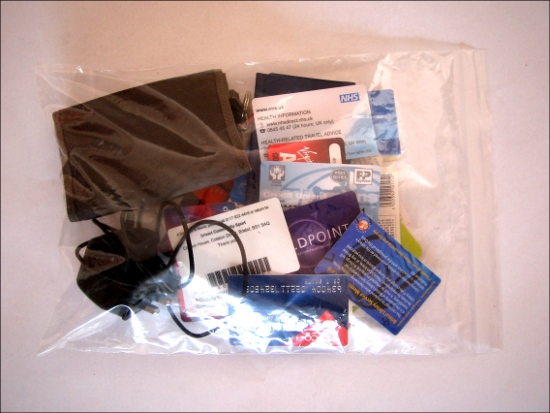
personal business cards, boots advantage card, marriott rewards card, cube cinema membership card, baa world points card, tesco clubcard, vbo membership card, WHSmith clubcard, silverscreen card, airmiles card, somerfield loyalty card, post office saving stamps collector card, virgin addict card, subway sub club card, dashi loyalty card, t-mobile top up card, european health insurance card, waterstone’s card, 20th century flicks card, bristol library card, co-operative membership card, nectar card, oyster card, bristol ferry boat company commuter card, love your body body shop card, co-operative dividend card, bristol credit union card, choices video library card, national rail photocard, bristol credit union account, bristol community sports card, star and garter public house membership card, first class stamp, nhs donor card, winning lottery ticket (2 GBP), t mobile pay as you go mobile and charger…
Upgradable to both corporate and governmental levels.
(500.00 GBP) – SOLD
MG: I can see on the web site, in the section The Status Project – Potentials that there are various ready-mades, ‘Off the shelf natural person – identity kits’. Am I right in presuming that there are individuals out there who have bought and used these kits?
HB: These are mostly existing persons, only one of them was synthetic. I will be setting up a small business soon though to manufacture and sell natural person.
MG: On exploring deeper into the Status Project data-base, there is link to a file called ‘In receipt of income based job seeker’s allowance’. This information is taken from ‘Jobcentre plus’, a UK government run organisation and on-line facility, inviting visitors to search for jobs, training, careers, childcare or voluntary work. How important was this source in compiling data for your database of individuals?
HB: This is only one record of over 8000 in the database, each record refers to one or more other record(s) in the database.
MG: What projects relate to/have influence on The Status Project in some way, and what makes them work?
HB: They Rule[3] – It allows users to browse through these interlocking directories and run searches on the boards and companies. A user can save a map of connections complete with their annotations and email links to these maps to others. They Rule is a starting point for research about these powerful individuals and corporations. A glimpse of some of the relationships of the US ruling class. It takes as its focus the boards of some of the most powerful U.S. companies, which share many of the same directors. Some individuals sit on 5, 6 or 7 of the top 500 companies.
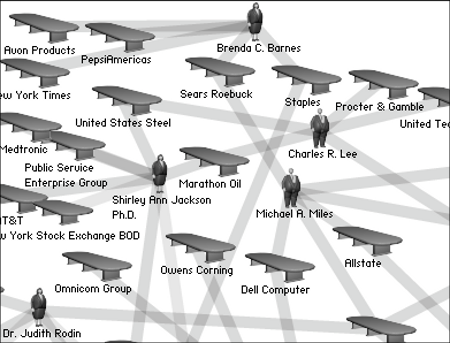
“Go to www.theyrule.net. A white page appears with a deliberately shadowy image of a boardroom table and chairs. Sentences materialize: “They sit on the boards of the largest companies in America.” “Many sit on government committees.” “They make decisions that affect our lives.” Finally, “They rule.” The site allows visitors to trace the connections between individuals who serve on the boards of top corporations, universities, think thanks, foundations and other elite institutions. Created by the presumably pseudonymous Josh On, “They Rule” can be dismissed as classic conspiracy theory. Or it can be viewed, along with David Rothkopf’s Superclass, as a map of how the world really works.”[4]
Bureau d’etudes – distribution.
http://bureaudetudes.org/
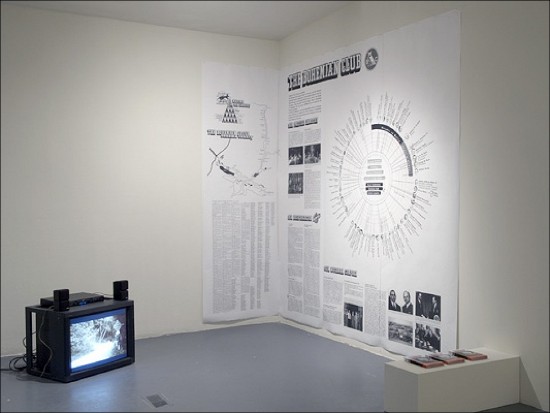
The Paris-based conceptual group, Bureau d’etudes, works intensively in two dimensions. In 2003 for an exhibition called ‘Planet of the Apes’ they created integrated wall charts of the ownership ties between transnational organizations, a synoptic view of the world monetary game. Check the article ‘Cartography of Excess (Bureau Bureau d’etudes, Multiplicity)’ written on Mute by Brian Holmes in 2003.[5]
MG: The sources of data for the Status Project seem to vary in type. Where do you collect them from and how do you collect the different kinds of data?
HB: It ranges from material instruments such as application forms right through to constitutional law and then common sense .
MG: How do you propose the Status Project might be used as a system for ‘identity mutation’?
HB: I want to communicate the fact that people in the UK can create a new identity lawfully without consulting any authority. I intend to illustrate the precise codification of class in the UK system, and there are three clearly defined classes of identity in the UK: human being, person and corporate . I am looking at the borders between these classes and how they touch each other, this can be seen with my status maps. Also, I intend to create aged off-the-shelf persons for sale similar to off-the-shelf corporations.
Taken from the front page of the Status Project:
Lower class human beings possess one severly reduced natural person and no control of an artificial person.
Middle class human beings possess one natural person and perhaps control one artificial person.
Upper class human beings possess multiple natural persons and control numerous artificial persons with skillful separation and interplay.
End of Part 1.
————–